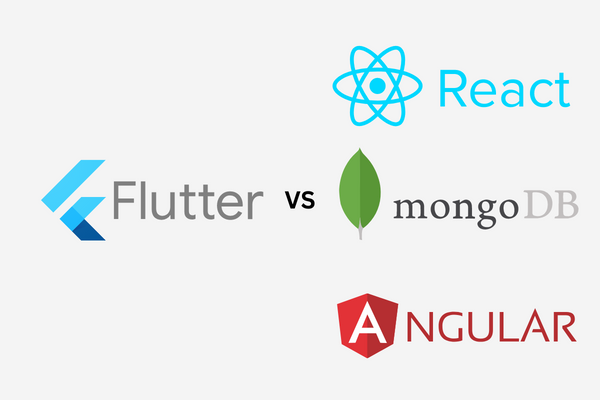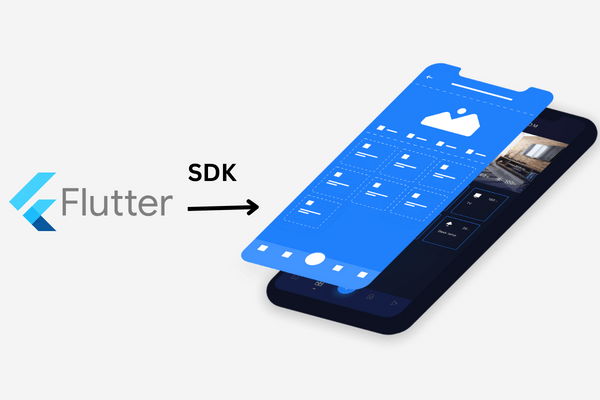Need A New App?
We build your dream app from conception to completion!
Leave Your Details and We’ll Get Back to You!
Playback speed:

As a professional in the tech industry, you’re probably already familiar with the importance of staying up to date on the latest developments in the technological world. The new technologies that are available can help you and your business to stay competitive and successful. One of the most important and exciting new developments to emerge in the last couple of years is Flutter, a Google-developed and open-source software development kit.
In this blog article, we’ll be exploring what is Flutter, the benefits of using it, the technical requirements and SDK, the challenges associated with it, and why you should consider adding it to your technology toolkit in 2023. Let’s get started.

Flutter is an open-source, mobile application development framework created by Google. It is used to develop apps for both Android and iOS devices. It also works with other operating systems such as Windows, Linux, and macOS. Flutter is written in the Dart programming language and uses the same engine as Google Chrome.
Flutter was created to simplify the process of creating cross-platform applications. It allows developers to build apps quickly, with less code and fewer bugs, and with a unified codebase. It also makes it easier to build beautiful and interactive user interfaces. So, if you are
The benefits of using Flutter include
The main benefit of using Flutter is that it makes the process of creating cross-platform applications much simpler. By using a single codebase, developers can create apps that can be used on multiple platforms. This is especially useful for businesses that want to reach a wider audience.
Flutter also enables developers to create beautiful and interactive user interfaces. This allows for a more engaging experience for users, resulting in higher user engagement and better user retention.
It reduces the amount of code that needs to be written. This makes it easier for developers to create apps quickly and efficiently. As a result, the development time is shorter, which can be a huge cost-saver.
Finally, Flutter is very flexible and customizable. Developers can easily change the look and feel of an app to meet their needs, without having to rewrite the entire codebase.

When deciding which technology to use for app development, it’s important to compare the different options. Let’s take a look at how Flutter compares to some of the other technologies out there.
When comparing Flutter to React Native, both are open source and are used to create cross-platform applications. However, Flutter is faster than React Native and requires less code to be written. Additionally, Flutter has an easier learning curve than React Native.
When comparing Flutter to Ionic, both are open source and can be used to create cross-platform applications. However, Flutter is faster than Ionic and requires less code to be written. Additionally, Flutter has a more modern look and feel than Ionic.
When comparing Flutter to NativeScript, both are open source and can be used to create cross-platform applications. However, Flutter is faster than NativeScript and requires less code to be written. Additionally, Flutter has better support for third-party libraries and frameworks than NativeScript.
Overall, Flutter is a fast, powerful, and flexible technology that offers many advantages over other technologies.

In order to use Flutter, you’ll need to meet some technical requirements. First, you’ll need to install the Flutter SDK, which is available for Windows, macOS, and Linux. Additionally, you’ll need to install the appropriate Android SDK and Xcode if you’re developing for Android and iOS respectively.
You’ll also need to install a code editor such as Visual Studio Code, IntelliJ IDEA, or Android Studio. Finally, you’ll need to install the Flutter package in order to access all of the features of the framework.

The Flutter SDK is a collection of tools, libraries, and frameworks that are used to develop apps with Flutter. It contains the core Flutter framework, the Flutter command line tools, and the Flutter tooling for IDEs.
The Flutter SDK also includes a number of libraries and packages that can be used to create custom user interfaces, create animations, and access device features. Additionally, the SDK includes a number of plugins, which are used to access third-party services and APIs.
Finally, the SDK includes a number of tools for debugging and testing apps. These tools include the Flutter Inspector, the Flutter Profiler, and the Flutter Driver

Flutter is an excellent choice for developing apps, as it allows developers to quickly and efficiently create high-quality apps. It is also very flexible, allowing developers to customize the look and feel of an app to meet their needs.
Additionally, Flutter makes it easy to create beautiful and interactive user interfaces. This helps to engage users and increase user retention, resulting in higher engagement and better user experience.
Finally, Flutter is very fast and efficient, allowing developers to quickly create apps with less code and fewer bugs. This can result in significant cost savings, as the development time is shorter.
Reach us to know more about what is Flutter and its app development without the expert team at CodeSparrk.

The ways in which Flutter enhances user experience include:
Flutter is designed to make it easy to create beautiful and interactive user interfaces. This makes the experience of using an app more engaging and enjoyable for users.
Additionally, Flutter makes it easy to access device features such as the camera, microphone, and other sensors. This allows developers to create apps that are more immersive and engaging.
Finally, Flutter makes it easy to create custom animations. It helps to further enhance the user experience by making the app more interactive and fun to use.
Flutter has a wide range of plugins available, which can be used to access third-party services and APIs. These plugins allow developers to quickly and easily integrate these services into their apps.
Some of the most popular Flutter plugins available include:
Although Flutter offers many advantages, there are also some challenges associated with using it. For example, Flutter is still relatively new, and there may be bugs and compatibility issues. Additionally, the Flutter community is still small, which can make it difficult to find help and support.
Finally, Flutter is not suitable for all types of apps. For example, if you’re looking to create a highly complex app with heavy graphics, then Flutter may not be the best choice.
Some of the challenges associated with using Flutter include:
Flutter is an open-source, mobile application development framework created by Google. It is used to develop apps for both Android and iOS devices, as well as other operating systems such as Windows, Linux, and macOS. Flutter is fast, efficient, and flexible, and offers many advantages over other technologies.
It makes the process of creating cross-platform applications much simpler and enables developers to create beautiful and interactive user interfaces. Additionally, it reduces the amount of code that needs to be written, resulting in shorter development time and cost savings.
Finally, Flutter has a wide range of plugins available, which can be used to access third-party services and APIs. Overall, Flutter is a great choice for making apps, and you should think about adding it to your tech toolkit in 2023. Contact CodeSparrk to meet all of your requirements for creating a perfect Flutter app in 2023.
You may also like to read famous couples apps made using flutter technologies.
Flutter is an open-source, mobile application development framework created by Google. It is used to develop apps for both Android and iOS devices, as well as other operating systems such as Windows, Linux, and macOS.
The main benefits of using Flutter are that it simplifies the process of creating cross-platform applications, it enables developers to create beautiful and interactive user interfaces, it reduces the amount of code that needs to be written, and it is very flexible and customizable.
In order to use Flutter, you’ll need to install the Flutter SDK, the appropriate Android SDK and Xcode (if you’re developing for Android and iOS respectively), a code editor such as Visual Studio Code, IntelliJ IDEA, or Android Studio, and the Flutter package.
We build your dream app from conception to completion!
Leave Your Details and We’ll Get Back to You!
